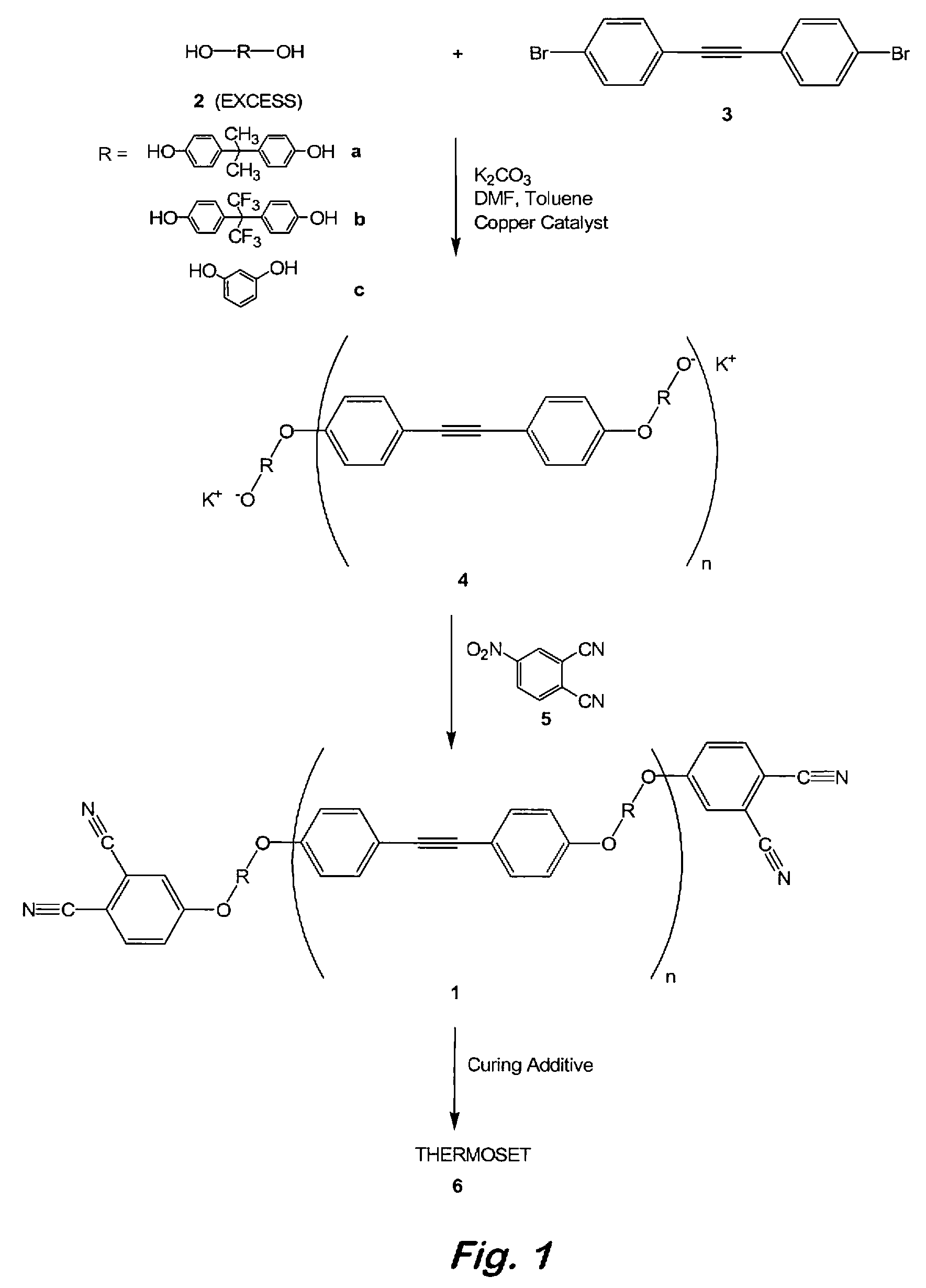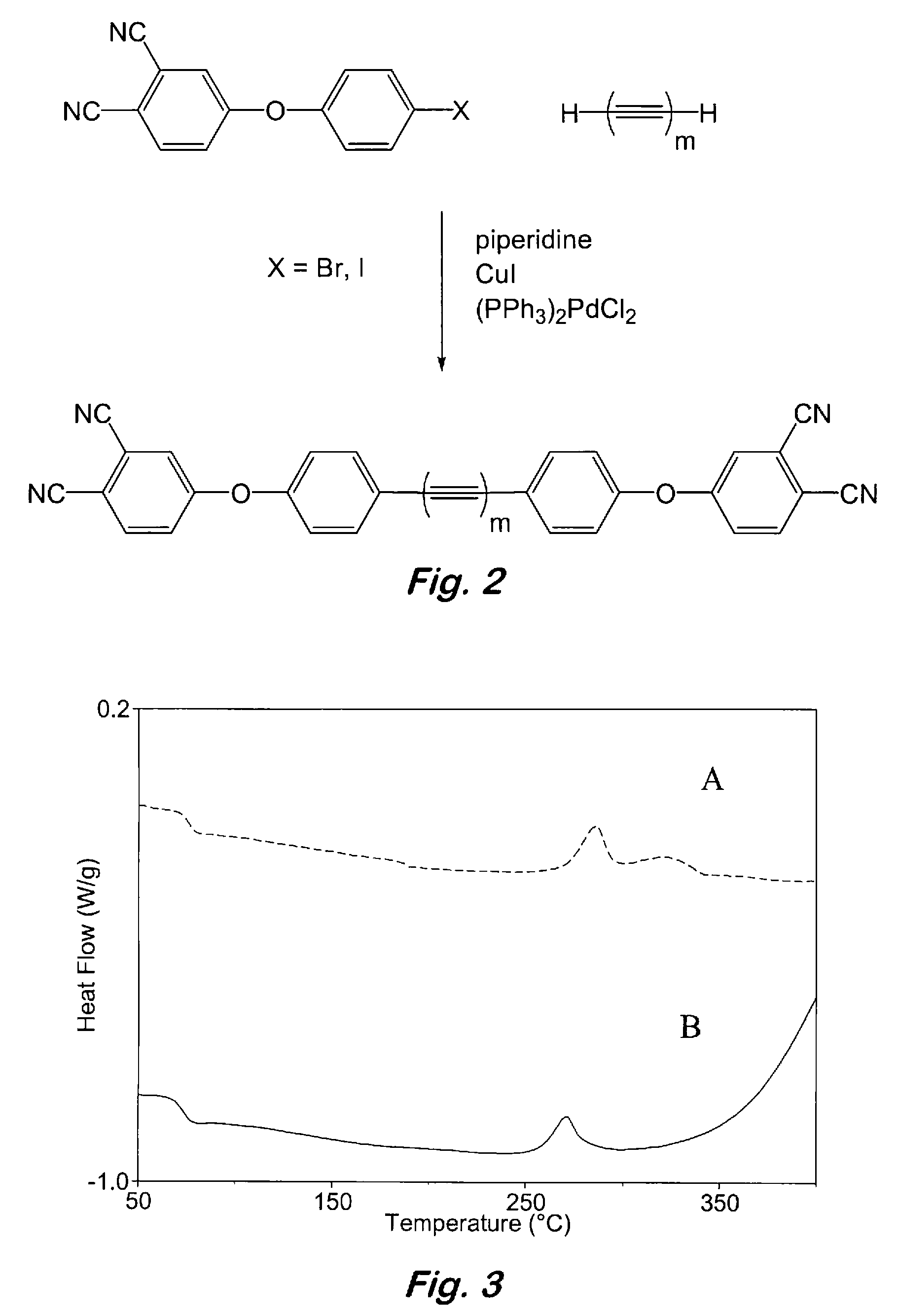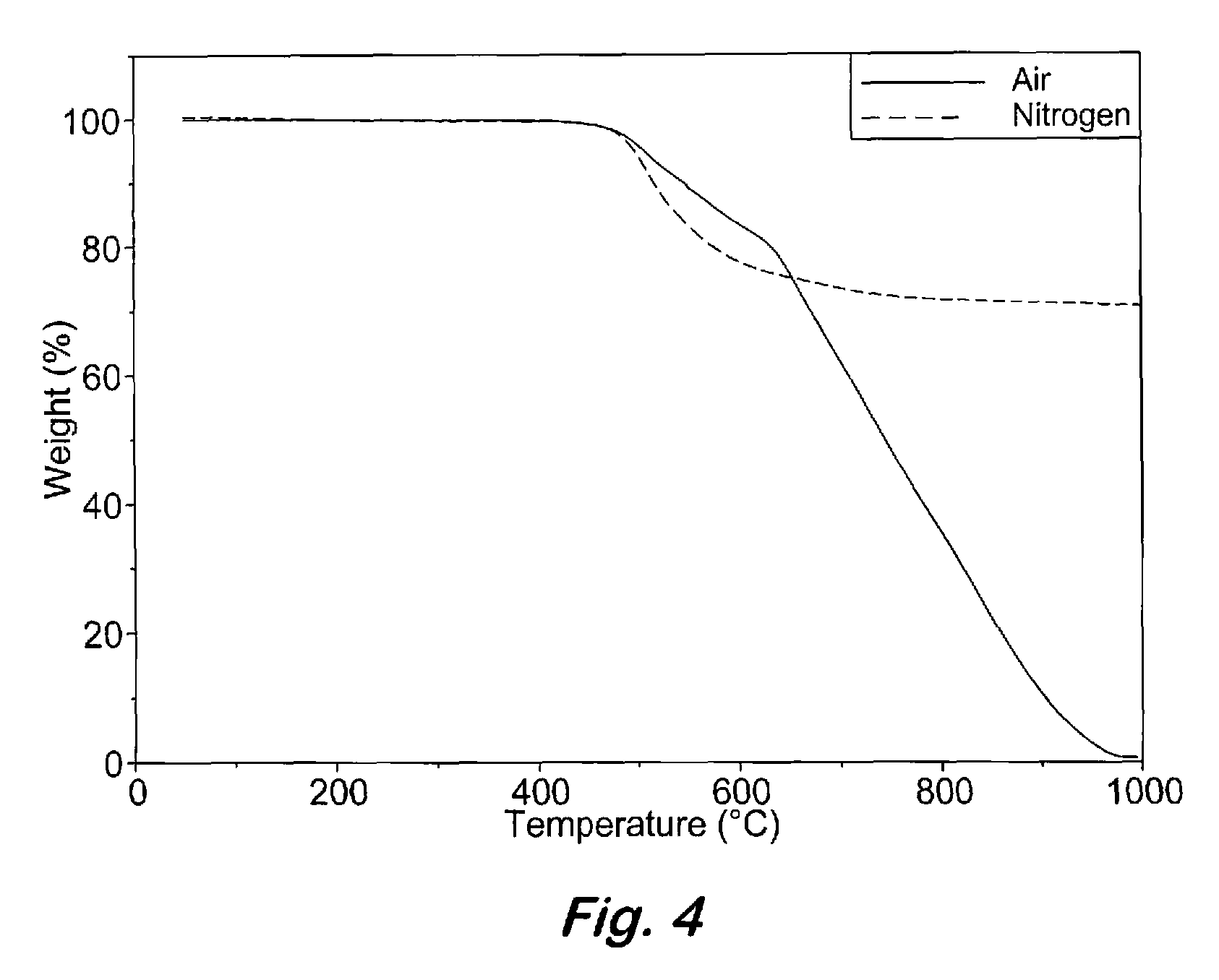Aromatic ether and alkynyl containing phthalonitriles
a technology of phthalonitrile and aromatic ether, which is applied in the field of phthalonitriles, can solve the problems that most high-temperature resins are not amenable to processing
- Summary
- Abstract
- Description
- Claims
- Application Information
AI Technical Summary
Benefits of technology
Problems solved by technology
Method used
Image
Examples
example 1
[0042]Synthesis of 2:1 oligomeric phthalonitrile based on bisphenol-A and 4,4′-dibromodiphenylacetylene—To a 100 mL, three-necked flask fitted with a thermometer, a Dean-Stark trap with condenser, and a nitrogen inlet were added bisphenol A (3.29 g, 14.4 mmol), 4,4′-dibromodiphenylacetylene (2.40 g, 7.14 mmol), (PPh3)3CuBr (0.1 g), powdered anhydrous K2CO3 (4.00 g, 29.0 mmol), toluene (5 mL), and N,N-dimethylformamide (DMF) (10 mL). The resulting mixture was degassed with argon at ambient temperature and the Dean-Stark trap was filled with toluene. The mixture was refluxed at 135-145° C. under an argon atmosphere for 12 to 18 h or until no more water was observed being collected in the Dean-Stark trap. FTIR spectroscopy was used to confirm and monitor the formation of the desired oligomeric product. Toluene was then removed by distillation and the reaction mixture was cooled to 50° C. At this time, 4-nitrophthalonitrile (2.51 g, 14.5 mmol) was added in one portion and the reaction m...
example 2
[0043]Curing of 2:1 oligomeric phthalonitrile based on bisphenol-A and 4,4′-dibromodiphenylacetylene with an aromatic amine—Samples containing the 2:1 oligomeric phthalonitrile from example 1 and 2-3 weight % of bis(4-[4-aminophenoxy]phenyl)sulfone (p-BPAS) or 1,3-bis(3-aminophenoxy)benzene (m-APB) were stirred at 200° C. for 2 minutes and cured under nitrogen by heating at 270° C. for 12 h (overnight), 300° C. for 4 h, 350° C. for 4 h, and 375° C. for 8 h to afford a polymer. The polymers exhibited excellent thermal and oxidative stability up to 425° C. before any weight loss was detected. Catastrophic decomposition occurred after 450° C. in air.
example 3
[0044]Selective curing of 2:1 oligomeric phthalonitrile based on bisphenol-A and 4,4′-dibromodiphenylacetylene by selective crosslinking of alkyne units—Samples containing the 2:1 oligomeric phthalonitrile from Example 1 were cured under nitrogen by heating at 270° C. for 4 h, 300° C. for 4 h, 350° C. for 4 h, and 375° C. for 8 h to afford a polymer from reaction only of the alkyne units. The polymers exhibited excellent thermal and oxidative stability up to 425° C. before any weight loss was detected. Catastrophic decomposition occurred after 450° C. in air.
PUM
| Property | Measurement | Unit |
|---|---|---|
| temperatures | aaaaa | aaaaa |
| temperatures | aaaaa | aaaaa |
| temperatures | aaaaa | aaaaa |
Abstract
Description
Claims
Application Information
 Login to View More
Login to View More - R&D
- Intellectual Property
- Life Sciences
- Materials
- Tech Scout
- Unparalleled Data Quality
- Higher Quality Content
- 60% Fewer Hallucinations
Browse by: Latest US Patents, China's latest patents, Technical Efficacy Thesaurus, Application Domain, Technology Topic, Popular Technical Reports.
© 2025 PatSnap. All rights reserved.Legal|Privacy policy|Modern Slavery Act Transparency Statement|Sitemap|About US| Contact US: help@patsnap.com



